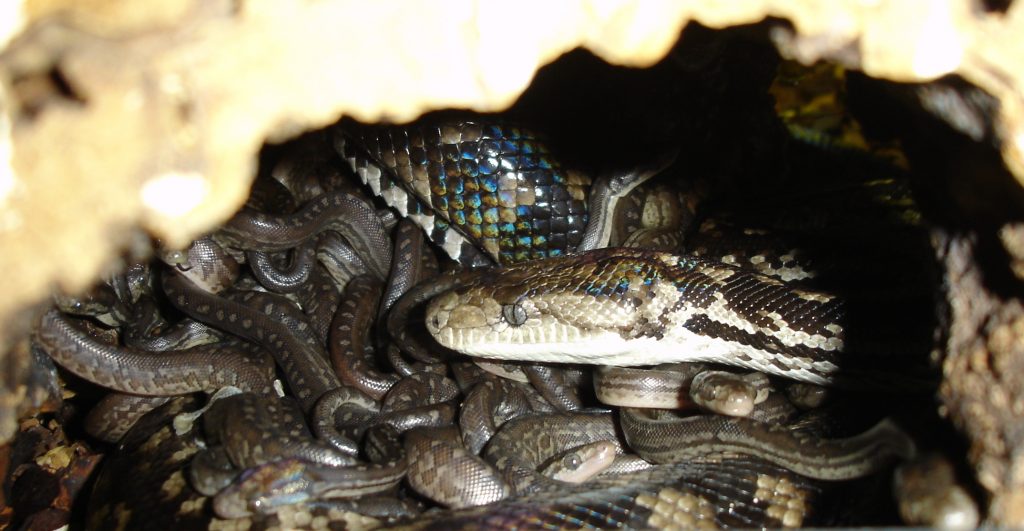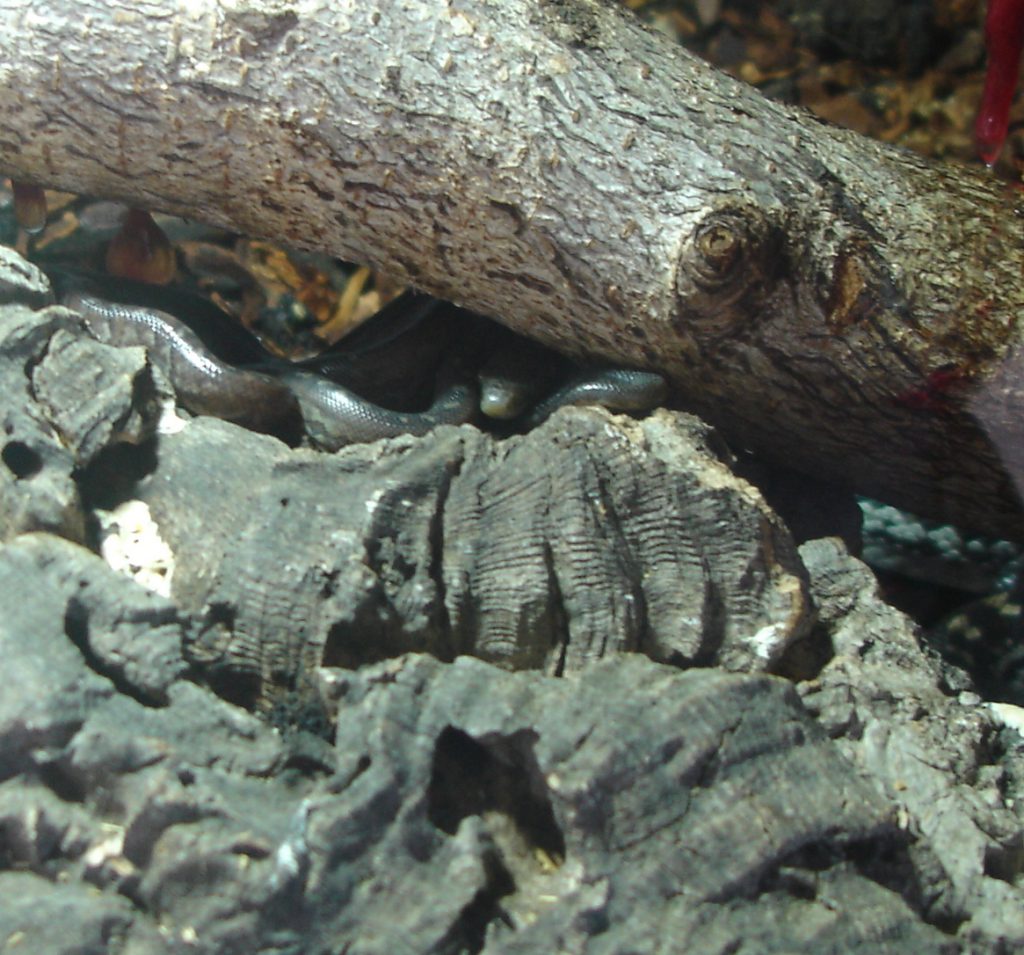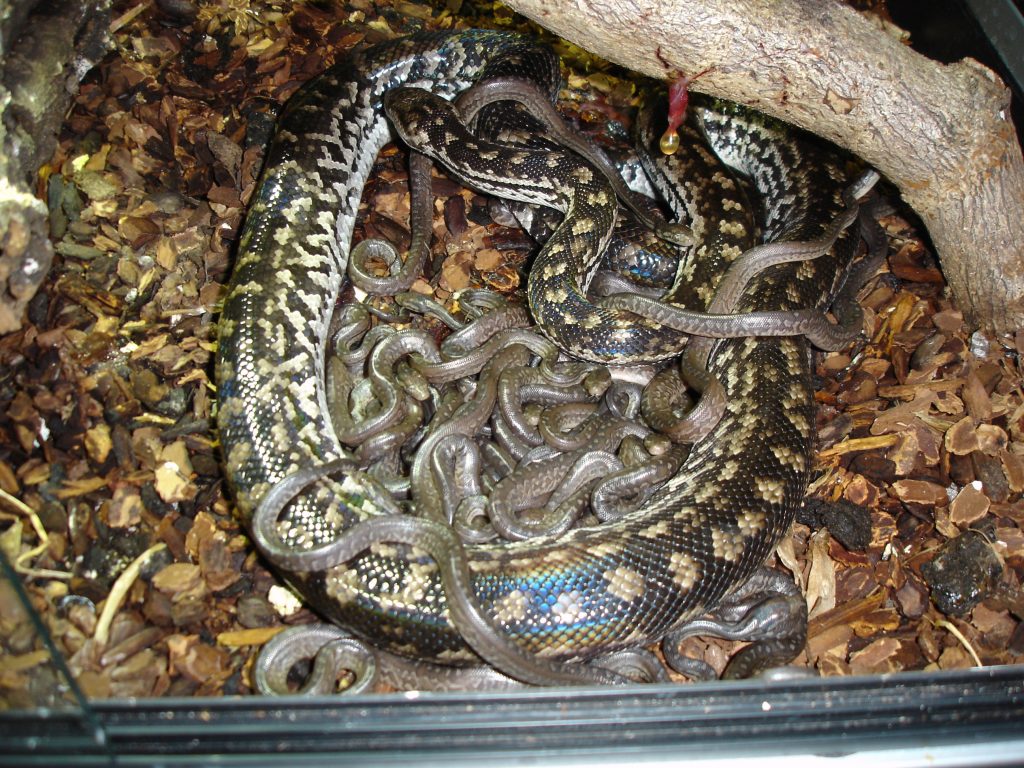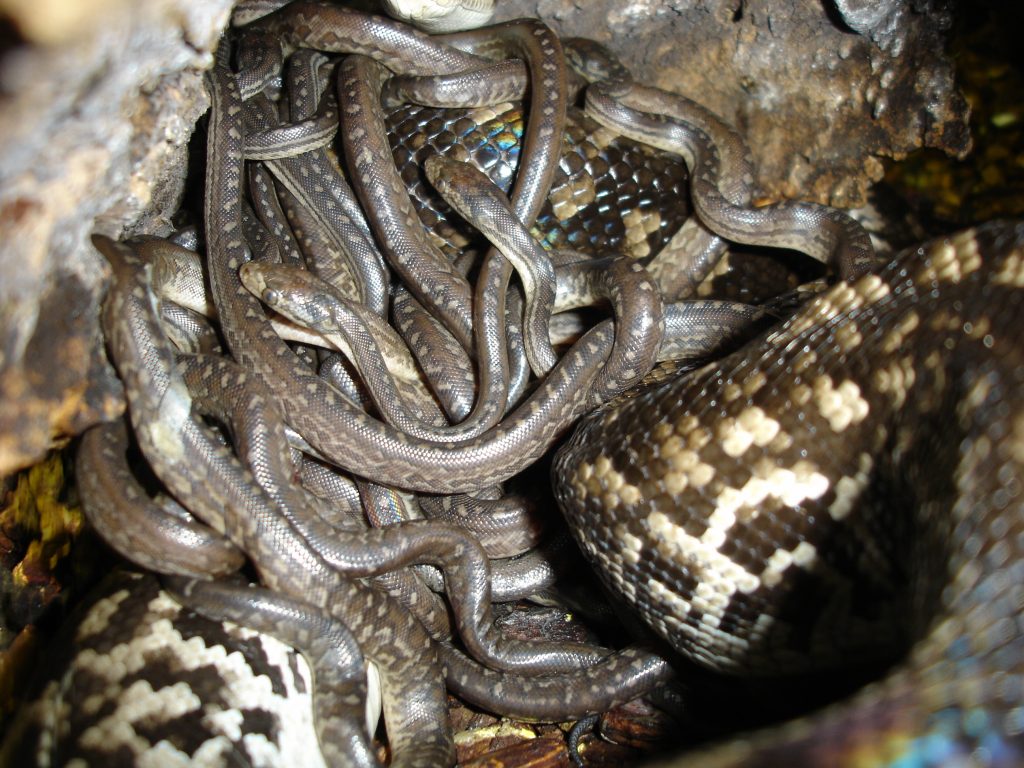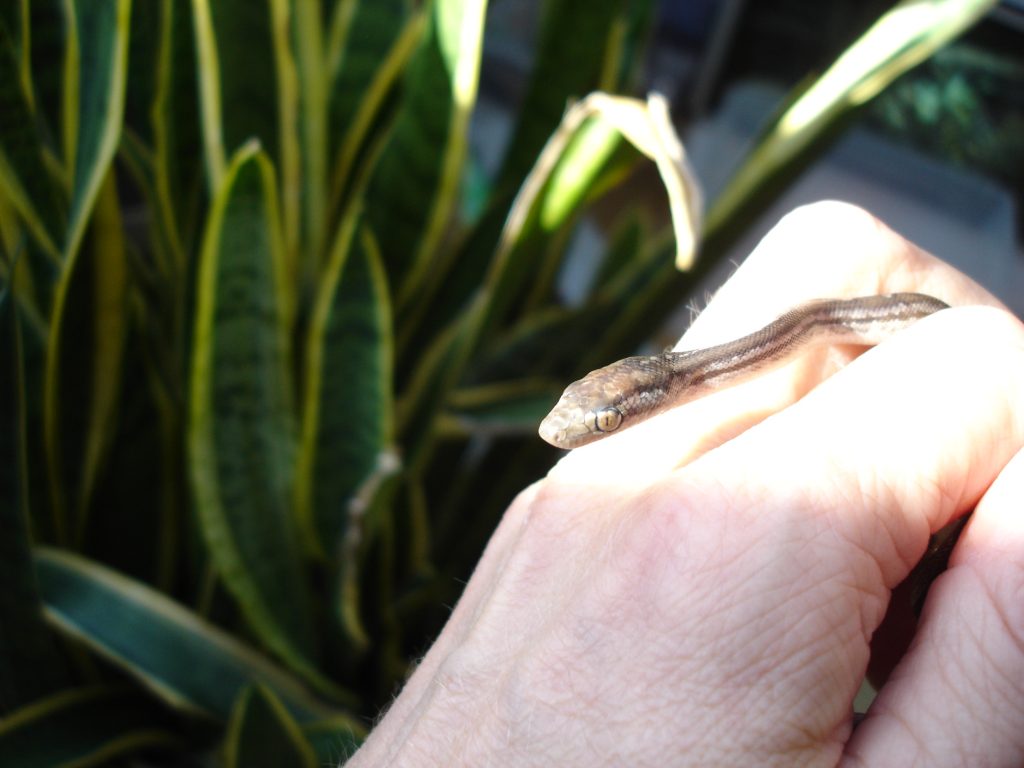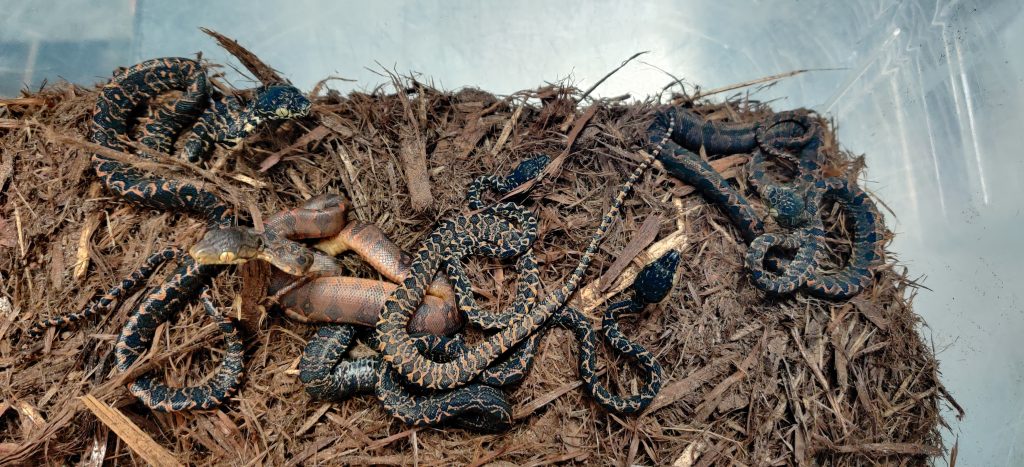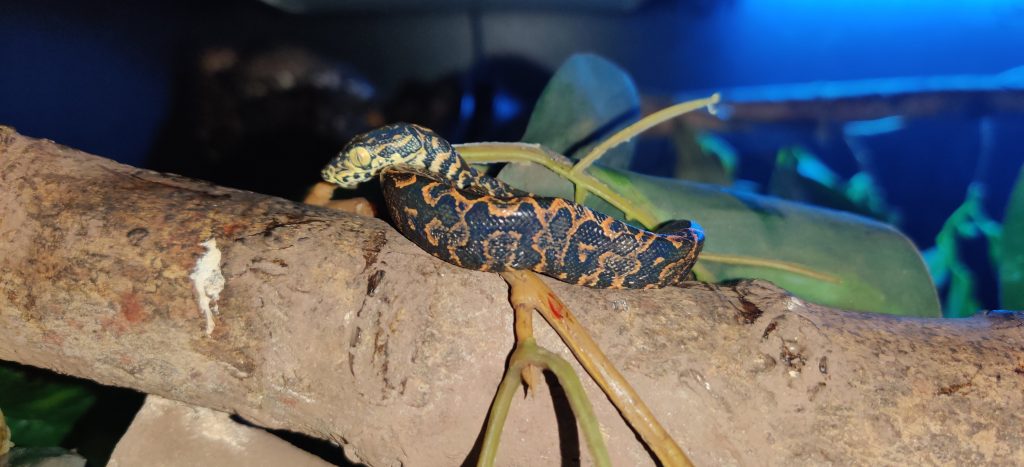Jamaican Boas have been bred as a measure of conservation since the 1970s. Today the species is still listed as Vulnerable (VU) by IUCN and listed in Appendix I of the Convention on International Trade in Endangered Species of Wild Fauna and Flora (CITES). The species is currently kept by multiple zoos and aquaria as well as private breeders. We sum up the annual breedings of this boa that we are aware of. Westindianboas.org provided over the years several breeders with breeding stock animals in the US. Unfortunately, restrictions make the export of this species unnecessarily difficult. Considering the good breeding successes on both sides of the Atlantic, it should be in the interest of conservation to exchange genetic material and thus continue to maintain a diverse genetic foundation for conservation.
Several litters of the Jamaican Boa, Chilabothrus subflavus, were born this season in the US, the UK and the EU. This particular litter, shown below, was born 9 September, 2021. Produced by Rob Stone of the US, the litter numbered 17 live with no stillborn or unfertilized ovum. Neonate weights ranged from 10.83 g to 13.93 g, with a mean of 12.98 g. SVL of the neonates was 25.72 cm to 33.18 cm, with a mean of 30.13 cm.
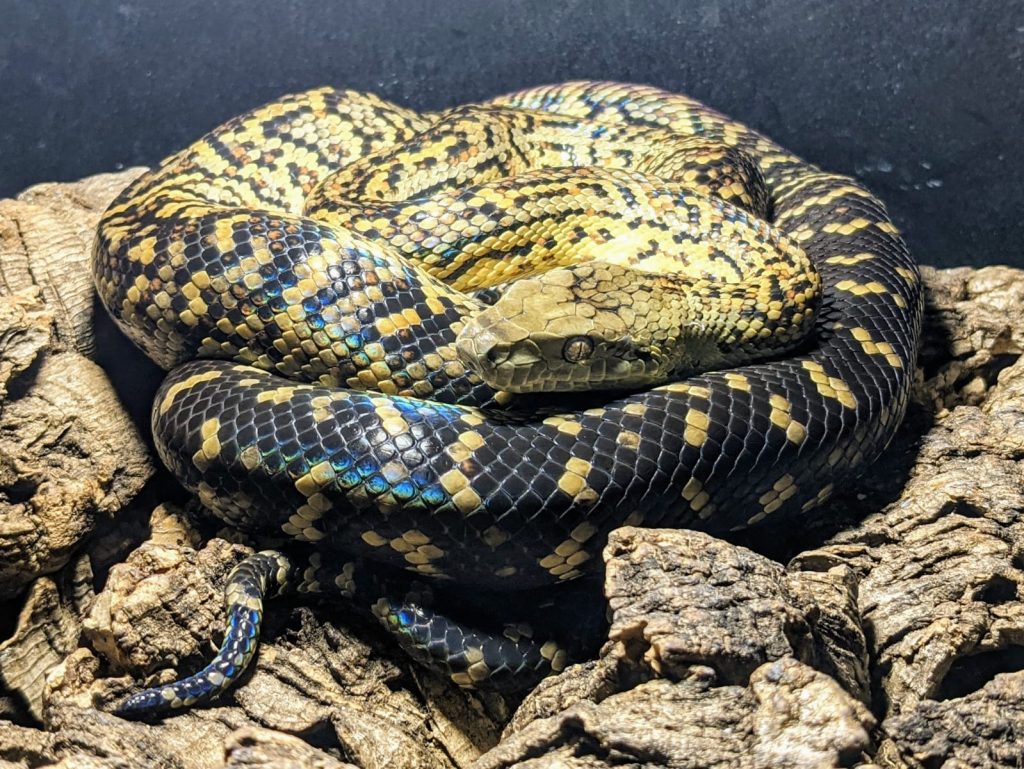
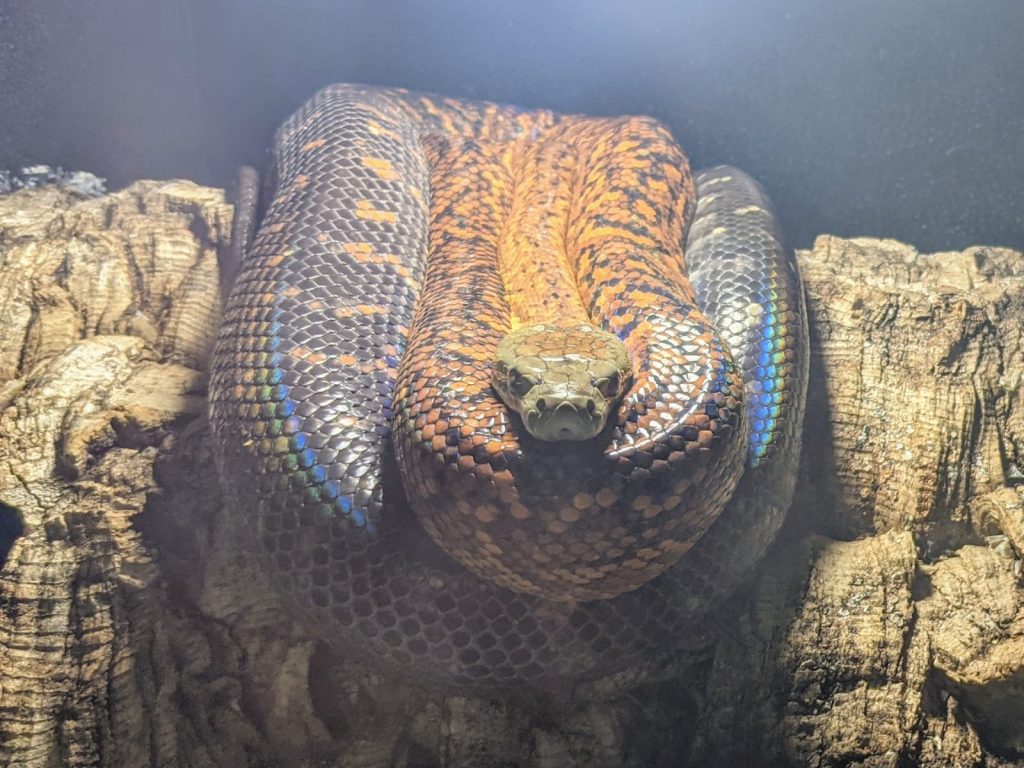
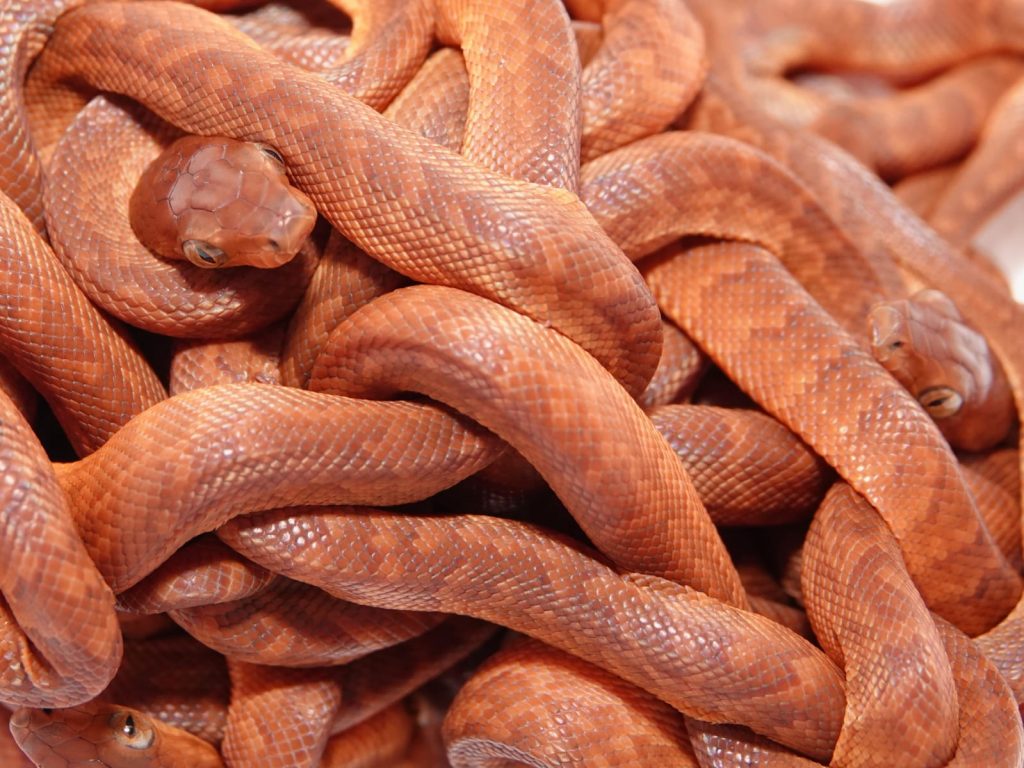
The Jamaican Boa is highly variable in color and pattern; the ontogenetic color change will take 18 – 24 months to complete.
The following litters were also produced during the 2021 season:
- UK: 12 live, 2 stillborn and 7 unfertilized ova on 3 October, 2021. Bred by Tom Middlebrook and Faye Da Costa.
- US: 15 live, 1 unfertilized ovum on 27 September, 2021. Bred by David Muth and Jared Rager.
- US: 34 live, 3 stillborn and 3 or 4 unfertilized ova on 26 September, 2021. Bred by Tom Crutchfield.
- Germany: 9 live, 1 stillborn and 6 unfertilized ova on 14 September, 2021. Bred by Sebastian Hölch.
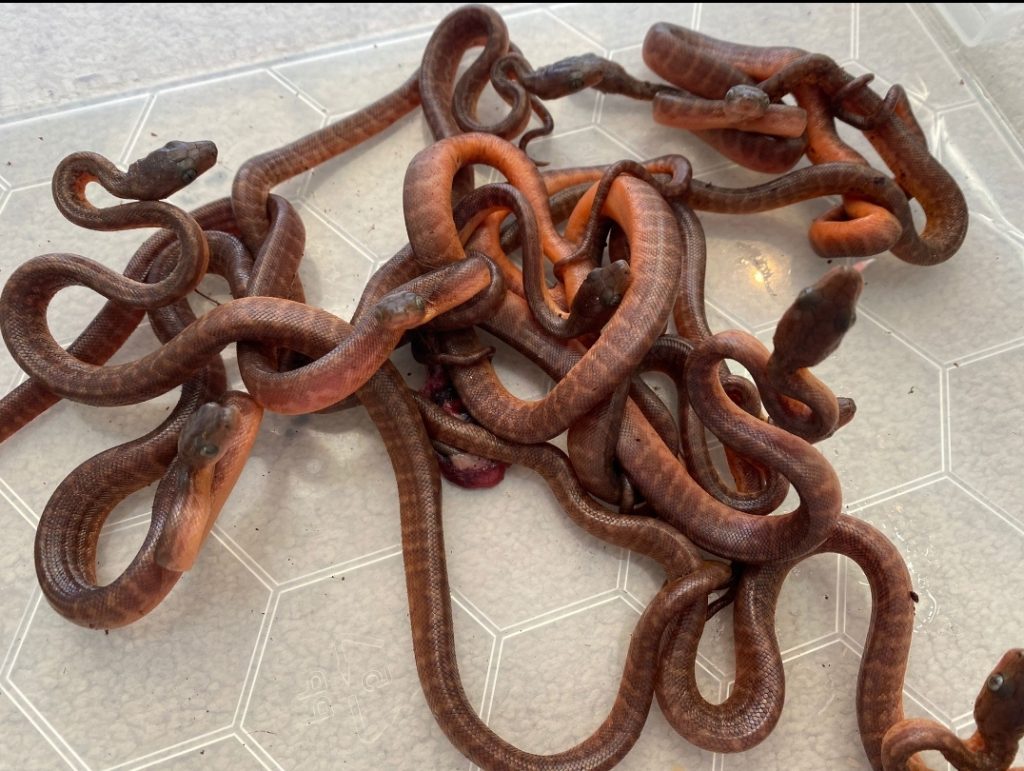
Visit the chapter for the Jamaican Boa here for more in depth information and photos.
